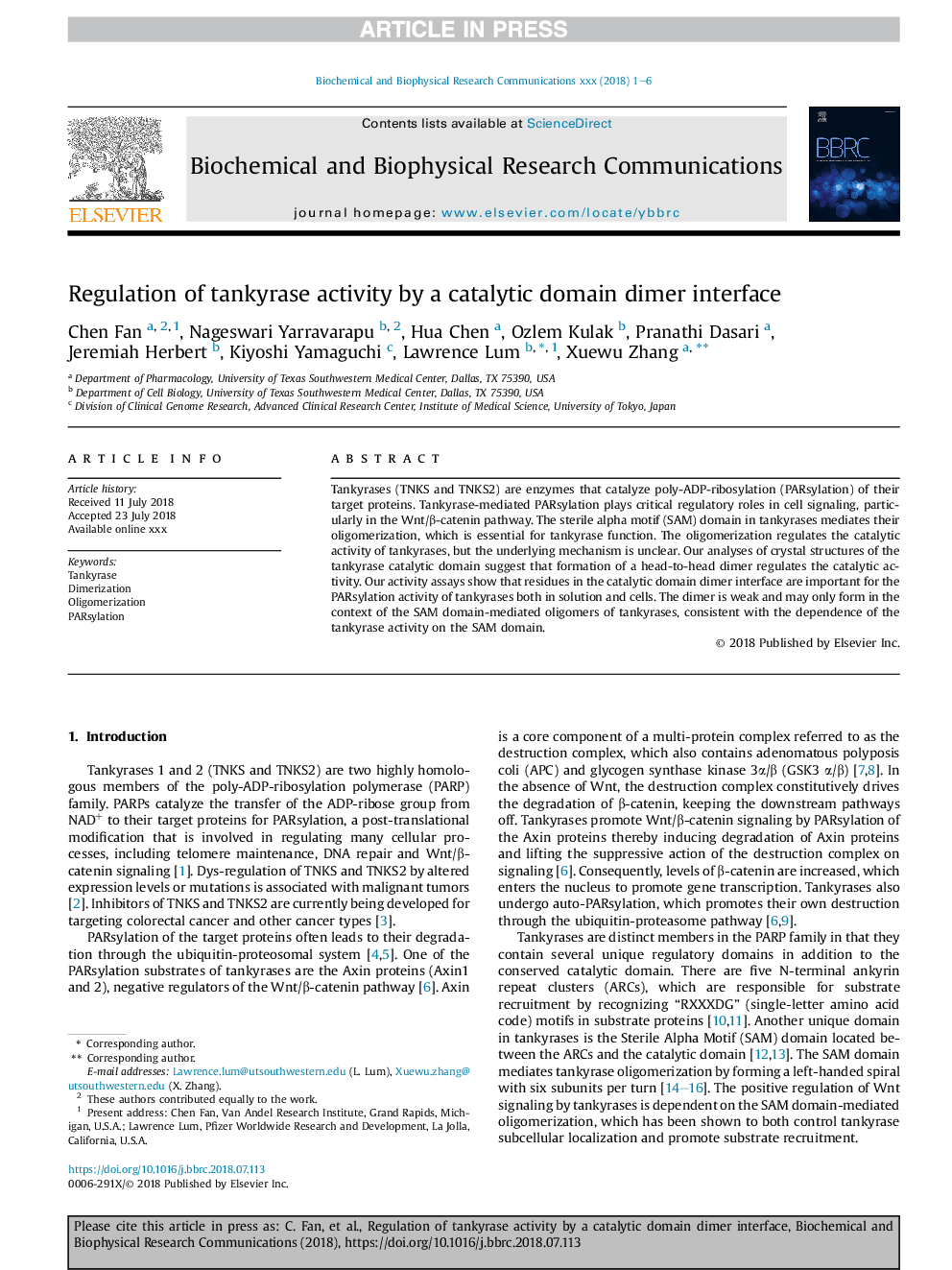| Article ID | Journal | Published Year | Pages | File Type |
|---|---|---|---|---|
| 8956025 | Biochemical and Biophysical Research Communications | 2018 | 6 Pages |
Abstract
Tankyrases (TNKS and TNKS2) are enzymes that catalyze poly-ADP-ribosylation (PARsylation) of their target proteins. Tankyrase-mediated PARsylation plays critical regulatory roles in cell signaling, particularly in the Wnt/β-catenin pathway. The sterile alpha motif (SAM) domain in tankyrases mediates their oligomerization, which is essential for tankyrase function. The oligomerization regulates the catalytic activity of tankyrases, but the underlying mechanism is unclear. Our analyses of crystal structures of the tankyrase catalytic domain suggest that formation of a head-to-head dimer regulates the catalytic activity. Our activity assays show that residues in the catalytic domain dimer interface are important for the PARsylation activity of tankyrases both in solution and cells. The dimer is weak and may only form in the context of the SAM domain-mediated oligomers of tankyrases, consistent with the dependence of the tankyrase activity on the SAM domain.
Keywords
Related Topics
Life Sciences
Biochemistry, Genetics and Molecular Biology
Biochemistry
Authors
Chen Fan, Nageswari Yarravarapu, Hua Chen, Ozlem Kulak, Pranathi Dasari, Jeremiah Herbert, Kiyoshi Yamaguchi, Lawrence Lum, Xuewu Zhang,
